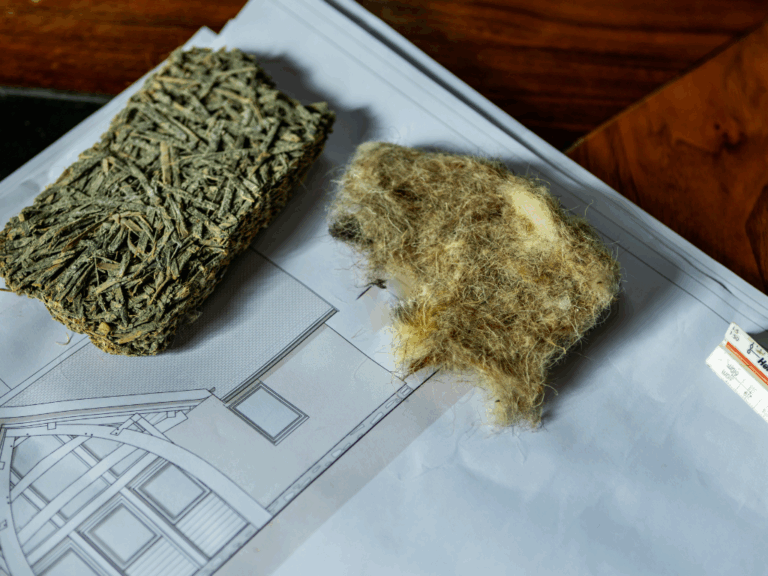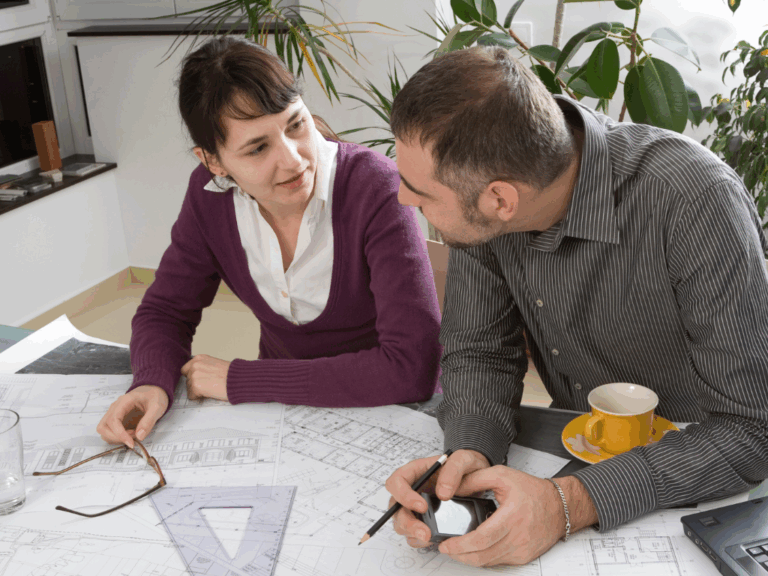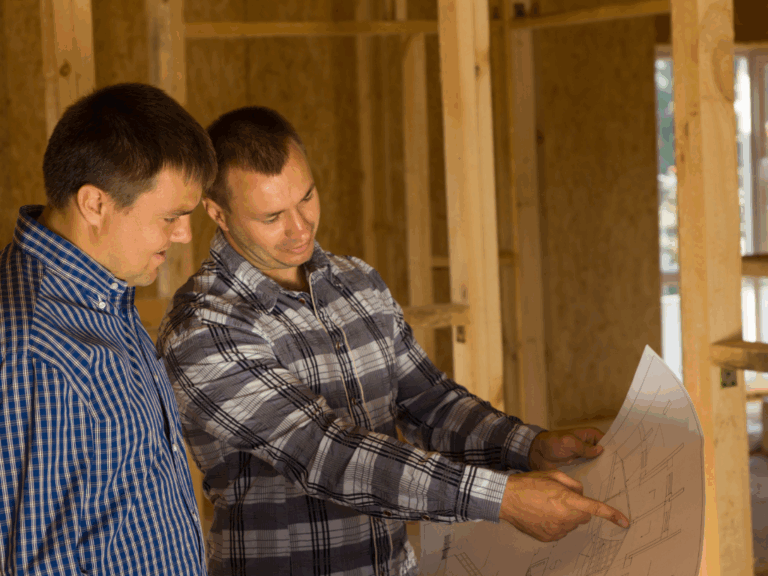Designing for Sustainability: Our Collaborative Approach

Building or renovating a home is a transformative journey, offering a unique opportunity to create spaces that enhance well-being, preserve heritage, and contribute to a healthier planet. In the UK, where buildings account for nearly 40% of energy-related CO₂ emissions, the design and construction process must evolve to meet the demands of sustainability and occupant health.
Whilst the conventional approach to hiring an architect provides a structured path, it can sometimes limit the integration of regenerative principles and natural materials.
This blog explores the challenges of the traditional process, highlights why homeowners and architects should prioritise health and sustainability, and introduces a collaborative approach to create innovative, eco-friendly homes using materials like hempcrete and reclaimed timber. Together, we can craft homes that are not just less harmful but regenerative—actively benefiting people, place, and planet.
Design: The Cornerstone of Sustainability
Before diving into the hiring process, it’s critical to recognise that design is the most powerful lever for achieving true sustainability in construction. Adding a few sustainable materials to an oversized, poorly planned home inhabited by those leading extractive lifestyles can hardly be called ‘sustainable’.
Thoughtful design encourages simpler, more balanced living, aligning with nature to minimise environmental impact. By prioritising sustainable or regenerative design, architects and homeowners can create homes that:
- Reduce Embodied Carbon: Using natural materials like timber, hempcrete, or lime plaster cuts the carbon footprint of construction compared to high-carbon concrete or steel.
- Lower Operational Carbon: Energy-efficient designs, such as passive solar orientation and breathable insulation, reduce heating and cooling demands, slashing energy use and emissions.
- Promote Healthier Living: Breathable natural materials like hempcrete and lime plaster regulate humidity, prevent mould, and eliminate toxic off-gassing, improving indoor air quality.
- Leave a Positive Legacy: Our homes, crafted with durable, non-toxic materials like reclaimed timber and hempcrete, achieve a net negative carbon footprint by sequestering more CO₂ than emitted, integrating regenerative designs that enhance local ecosystems and ensure biodegradability to leave a planet-positive legacy for future generations.

Regenerative Design
Regenerative design goes beyond sustainability, aiming to restore ecosystems and foster lifestyles that actively contribute to human and environmental health. For example, a compact, elegantly designed off-grid home within a food-growing smallholding with biophilic elements (e.g., natural light, green spaces, earthing floors) and renewable materials can create a net negative carbon footprint, whilst promoting occupant well-being through connection to nature. This holistic approach ensures homes are regenerative, aligning land, building, and lifestyle for positive impact.
Challenges in the Conventional Architect Hiring Process

The standard process for hiring an architect in the UK, guided by the Royal Institute of British Architects (RIBA) Plan of Work, is a well-established framework that serves many projects effectively. Typically, it involves:
- Client Brief Development: The client outlines their vision, budget, and requirements, often with limited technical expertise.
- Architect Selection: Clients choose an architect based on recommendations, RIBA directories, or online portfolios, assessing experience and fees.
- Design Phases: The architect creates concept designs (RIBA Stage 2), refines them into detailed plans (Stage 3), and prepares technical documents (Stage 4).
- Tendering: Plans are sent to builders for competitive bids, with clients often selecting the most cost-effective quote.
Construction: The architect may oversee the build (Stage 5), ensuring alignment with the design, though their role varies.
Whilst this process provides structure, it can present challenges that limit the potential for sustainable, healthy, and heritage-sensitive outcomes:
- Competitive Tendering Pressures: The tendering process encourages builders to submit low bids, which can lead to compromises such as using less sustainable materials (e.g., high-carbon cement) or less experienced labour. A 2021 survey found that 60% of UK construction projects exceed budgets due to tendering-related issues, impacting quality (Designing Buildings).
- Limited Focus on Natural Materials: Many architects, whilst skilled in aesthetics and functionality, may have less experience with natural materials like hempcrete, lime plaster, or wool insulation, which are critical for low-carbon, healthy buildings. Only 32% of UK architects regularly incorporate renewable or low-carbon materials, according to industry reports.
- Fragmented Collaboration: The separation of architect, builder, and client can result in misaligned priorities. Architects may focus on design innovation, whilst builders prioritise cost efficiency, potentially overlooking the client’s sustainability or heritage goals. Around 45% of UK homeowners report communication gaps between architects and builders as a project challenge.
- Emphasis on Short-Term Costs: The conventional process often prioritises upfront savings over long-term value, leading to designs with higher operational carbon (e.g., inadequate insulation) or materials that don’t support occupant health or historic fabric preservation.
- Missed Opportunities for Regeneration: The linear process may not fully explore regenerative design principles, such as biophilic design or ecosystem integration, limiting the home’s potential to contribute positively to the environment.
These challenges highlight an opportunity to enhance the process, fostering closer collaboration and a deeper focus on sustainability to better serve homeowners, architects, and the planet.

Why Homeowners, Architects, and Builders Should Care About Health and Sustainable Buildings
Sustainable, healthy buildings are essential for addressing climate change, enhancing well-being, and preserving cultural heritage. Here’s why homeowners, architects, and builders should care:
- Healthier Living Environments: Natural materials like lime plaster and hempcrete reduce indoor pollutants, preventing respiratory issues and allergies. Improved air quality can reduce sick days by 20% and boost productivity, benefiting occupants (UK Green Building Council).
- Environmental Responsibility: UK homes contribute 25% of national carbon emissions, making sustainable design vital for net-zero goals. Low-carbon materials and energy-efficient designs can cut emissions by up to 30%.
- Economic Benefits: Energy-efficient homes save homeowners up to £1,000 annually on utility bills in UK climates, whilst durable materials reduce maintenance costs.
- Heritage Preservation: Retrofitting older properties with breathable materials preserves historic charm whilst enhancing energy performance, maintaining cultural value for communities.
- Regenerative Potential: Homes designed for simpler, nature-aligned lifestyles can restore ecosystems, sequester carbon, and support biodiversity, leaving a planet-positive legacy.
For architects, embracing sustainable and healthy building practices opens opportunities to innovate, lead in a growing market, and contribute to a more resilient future. By mastering regenerative design and natural materials, architects can differentiate their portfolios, meet rising client demand for eco-friendly homes, and drive industry transformation.

Building Your Dream Home Together
At Stephen Grindrod Ltd, we believe that creating a sustainable, healthy home begins with teamwork. Our collaborative approach brings homeowners, architects, and builders together from the outset, ensuring your vision for an eco-friendly, heritage-inspired home is realised. Whether you’re a homeowner dreaming of a healthier, greener home or an architect passionate about sustainable design, we invite you to join us in crafting homes that benefit people and planet.
Here’s what our collaborative process offers:
- A Shared Vision: We start with an engaging session to explore sustainable and regenerative design, helping homeowners define their environmental, social, and economic goals. Working with architects and our team, we create a plan that blends beauty, practicality, and sustainability, ensuring your home reflects your values.
- Eco-Friendly Materials: We specialise in natural, low-carbon materials like hempcrete, reclaimed timber, and lime plaster, which create healthier homes and reduce environmental impact. Hempcrete, for instance, can sequester up to 15 tonnes of CO₂ per hectare, making it a planet-positive choice. Homeowners enjoy non-toxic, durable spaces, whilst architects gain expertise in cutting-edge materials.
- Nature-Inspired Design: Our designs promote simpler, nature-aligned living with features like compact layouts, passive solar orientation, and green roofs or courtyards. These homes can cut energy use by up to 50% and boost well-being, offering homeowners a healthier lifestyle and architects a chance to pioneer regenerative solutions.
- Clear Communication: We provide homeowners with straightforward information on material benefits, costs, and environmental impacts, empowering informed decisions. Architects contribute their creativity, ensuring designs are both visionary and feasible. Our transparent process avoids the delays of traditional tendering, which affects 50% of UK projects (Designing Buildings).
- Smooth Delivery: From initial vision to final handover, our team ensures a seamless build with clear timelines and budgets. Homeowners gain peace of mind, knowing their home is sustainable, whilst architects see their designs brought to life without compromise.
This collaborative approach makes it easy for homeowners to create a home that’s healthy, cost-effective, and kind to the planet, whilst giving architects the opportunity to lead in sustainable or regenerative design. Together, we can build homes that honour heritage, embrace innovation, and leave a lasting, positive legacy.
Conclusion
The traditional architect hiring process can fall short in delivering sustainable, healthy homes due to cost-driven tendering and fragmented roles. By focusing on sustainable design and a collaborative process, homeowners and architects can create spaces that reduce carbon, enhance well-being, and leave a planet-positive legacy. At Stephen Grindrod Ltd, our collaborative approach brings clients, architects, and builders together to craft homes with natural materials like hempcrete and reclaimed timber. We invite homeowners to start building their dream home and architects to partner with us in shaping a greener future.

